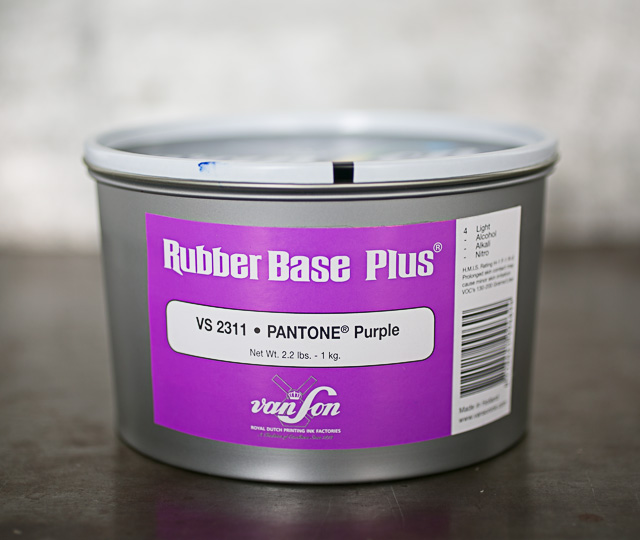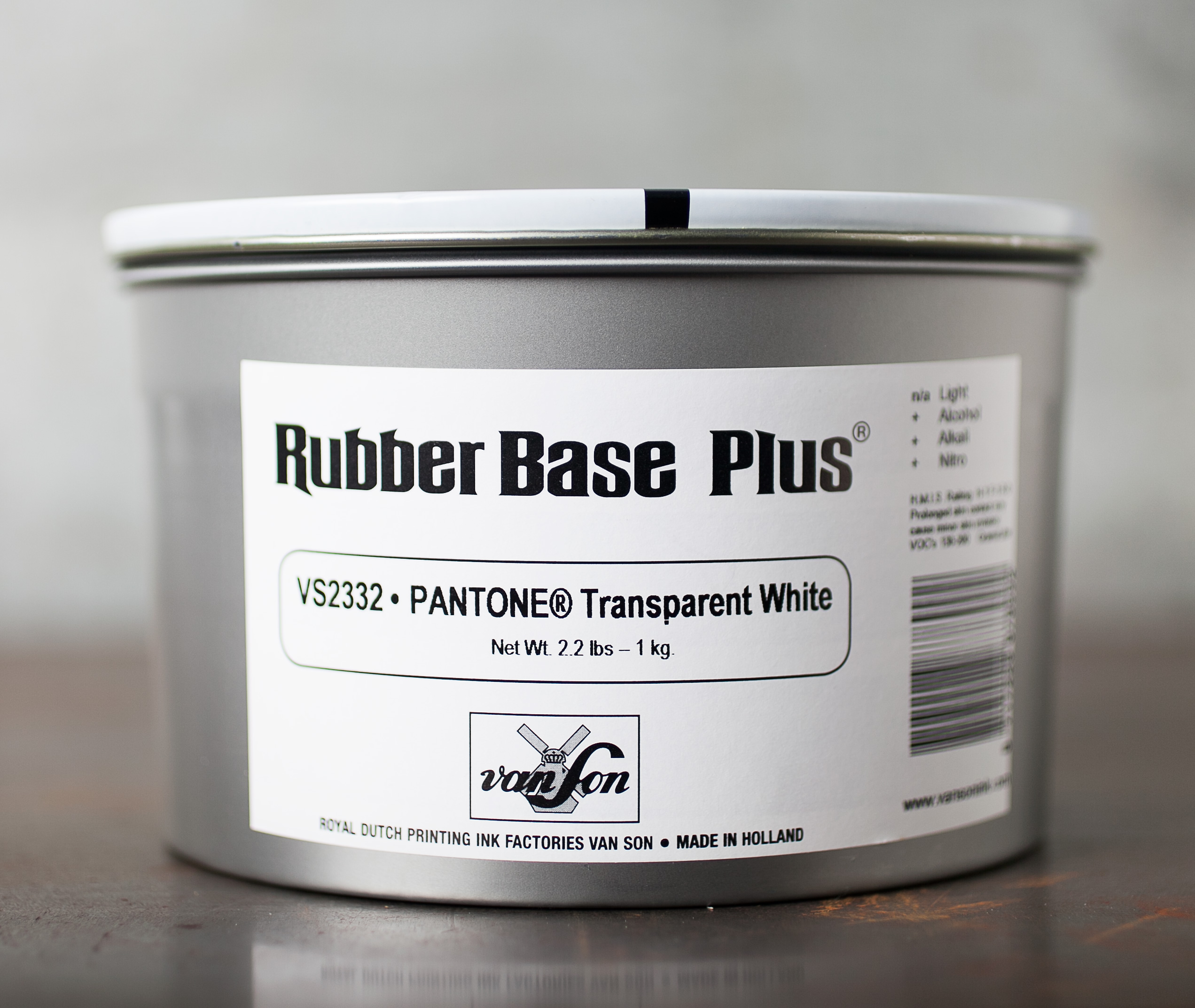Letterpress inks, rubber-based
Most of the rubber-based ink colors listed here are Pantone Basic Colors. If you have these 14 colors, you’ll be able to mix any of the 1600+ colors in the Pantone Formula guide. The other colors we carry are important for different reasons: opaque white (if you want to print white); printing black (if you want to print black); and custom ink mixes (especially good if you don’t have all the Pantone Basic Colors, or for very light colors and pastels). The inks below are all rubber-based inks, ideal for general letterpress printing—it’s the type of ink we use every day in our shop. Use oil-based inks if you’d like a glossier ink that works well with coated papers (though you won’t be able to leave oil-based ink on press overnight).
-

Classic Plus (Universal Printing Black 10850)
$46.00 Read more -

Classic plus (Rubber Base) Pantone Rhodamine Red
$89.00 Add to cart -

Classic Plus (Rubber Base) Rubine Red
$84.50 Read more -

Classic Plus (Rubber Base) Pantone Warm Red
$84.50 Add to cart -

Classic Plus (Rubber Base) Pantone Red 032
$77.50 Add to cart -

Pantone Orange 021
$93.25 Add to cart -

Classic Plus (Rubber Base) Pantone Yellow
$72.00 Read more -

Classic Plus (Rubber Base) Pantone Green
$89.00 Add to cart -

Classic Plus (Rubber Base) Pantone Reflex Blue
$89.00 Read more -

Classic Plus (Rubber Base) Pantone Blue 072
$93.40 Add to cart -

Classic Plus (Rubber Base) Pantone Process Blue
$89.00 Add to cart -

Classic Plus (Rubber Base) Pantone Violet
$90.00 Add to cart -

Classic Plus (Rubber Base) Pantone Purple
$89.00 Add to cart -

Classic Plus. Rubber Base, Black (Mixing)
$53.00 Add to cart -

Classic Plus, Pantone White (Previously Transparent White /mixing white)
$56.00 Read more -

RB Classic Plus Opaque White 3.3 lb
$113.00 Read more -

Custom Rubber Base Ink Mix
$68.00 Add to cart
rubber-based letterpress ink
Ordering a custom ink color: Add a custom ink color to your cart. Your shopping cart page will appear. If you want more than one custom ink, then select your quantities and update the cart. When you are ready to checkout, select proceed to checkout. In the ORDER NOTES, provide the PMS color(s) for your ink. It is best if you are looking at a Pantone Uncoated Formula Guide for the most accurate color chip. We need a three or four digit number for each ink color.
break down of components (varies depending on color)
- 20-30% vegetable oil (including soy and linseed)
- 12-35% petroleum
- 15-25% pigment
- 20-40% synthetic resins
pros: strong general ink (it’s what we use in our shop!); matte finish; slow drying so you can leave it on the press for several hours or overnight; will not skin in the can; ideal for matte papers; colors are strong and vibrant.
cons: not ideal for metallic or coated papers (takes longer to dry); large solids with heavy ink coverage can take days or weeks to dry; slow drying of inks when overprinting (layering multiple inks on top of each other); colors may not be as loud or bright as other oil-based inks.
keep in mind: don’t mix rubber-base inks together with oil based inks (note that metallics are always oil-based).
Note: Inks cannot be shipped to Russia.
the reason Boxcar Press chose Van Son rubber-based ink for their print shop: it makes our printing process more flexible, since we’re able to keep a press open for a few hours if necessary while we do other things. Colors are consistent. This ink is the standard in the letterpress industry because it’s thick, consistent, and slow to dry. The only time we use oil-based letterpress inks are when we’re printing metallics, because metallics only come as oil-based.